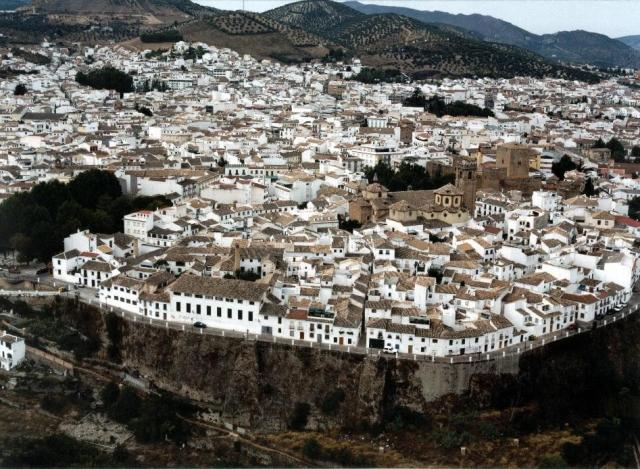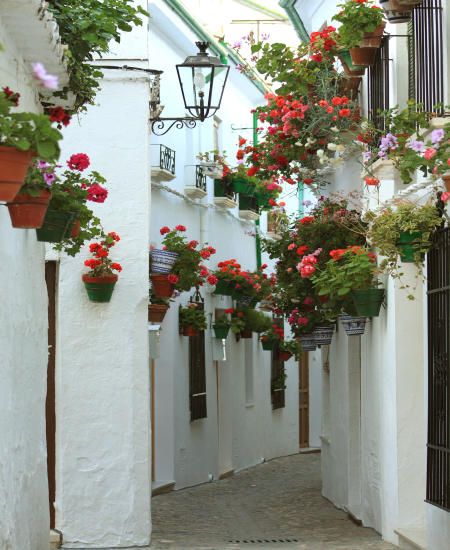
In the south of the province of Cordoba lies the National Park Sierras Subbéticas. The steeply sloping terrain rises up above beautiful narrow valleys and looking over the valleys is the idyllic Andalucian town called Priego de Cordoba. Nowadays Priego de Cordoba could easily be considered “The Mecca” of Extra Virgin Olive Oil. The proportion of premium olive oil producers working in this region is unlike any other in the world, so much so that it is renowned worldwide for it’s quality.
“D.O Priego de Cordoba” is a “Protected Designation of Origin” (PDO) that guarantees top quality olive oil and prides itself in producing exceptional oils and maintaining very strict levels of control. The protected region spans 29,600 hectares encompassing four municipalities Almedinilla, Carcabuey, Fuente Tójar y Priego de Córdoba. The certified D.O Priego de Cordoba extra virgin olive oils from this region have amassed over 400 prizes across the globe. In recent years the oils from Priego de Cordoba have been in all the top ten lists, awards and competitions worldwide and not surprisingly the town hosts “ The World Congress for Olive Oil Sensory Analysis” where you will find the finest olive oil experts from around the world, amongst them my friend Juan Ramon Izquierdo, head of the Tasting Panel for the Ministry of Agriculture here in Spain, an authentic “guru” and leader in his field.
The town is slightly off the beaten track but it is easily reached, as it is just a one-hour drive from Granada, Cordoba, Malaga or Jaen. So for those of you that live in Andalucia I highly recommend a trip there to do some Olive Oil tourism and stock up with some of the finest olive oil Spain has to offer, it’s on your doorstep! Many of the Almazaras (mills) offer guided tours and tasting sessions for groups so if you can get a group together I would waste any more time! Three of my favourite producers from the region are Manuel Montes Marin who produces the brand “Portico de la Villa” which is absolutely exceptional, Mueloliva which I discovered after they produced an exceptional oil in the harvest 2011/12 under their brand "Venta del Baron" which I have written about on many occasions (available in Carrefour) and lastly but not least, by any means, Almazaras Subbética which produce “Rincon de la Subbética” declared the best extra virgin olive oil in the world 2011-12 due to the vast amounts of accolades it accumulated over that season. However, all three oils have continued to win prizes and produce great harvests year in and year out.
.jpg)
.jpg)
.jpeg)
Portico de Villa Venta del Baron Rincon de la Subbetica
To be honest you will be hard fetched to find a “normal” olive oil in this region. If it carries this logo on the back of the bottle :
.jpg)
You can be sure it will be a great olive oil. The Protected Designation of Origin (P.D.O.) of Priego de Cordoba exclusively covers extra virgin olive oils made with the Hojiblanca, Picudo and Picual varieties. These oils have multiple culinary uses as they are high in polyphenols and thus have a longer shelf life, meaning their flavour (organoleptic qualities) will also last much longer, so if you are buying olive oil from the previous seasons harvest, which is what you will still find in the supermarkets, I would suggest these varieties, as opposed to Arbequina for example, which will have lost most of it’s “notes” after maybe eight months of being bottled. These varieties are especially indicated for dressing salads, fried food, roasts, baking and confectionary, pretty much anything apart from sauces, as they are particularly fruity and herbaceous in flavour.
The rugged and mountainous terrain of the Sierras Subbéticas national park enjoys a unique microclimate between 700m and 1000m above sea level, characterised by high rainfall and large temperature variations. It is in this setting that, through a combination of natural selection and traditional methods, the legendary olive trees have developed a peculiar hardiness and resistance to icy temperatures enabling them to withstand the passage of time and bear quality fruits year in and year out.
.jpg)
.jpg)
.jpeg)
.jpg)
The unique setting of rolling hills and olive tree mountains gives the town of Priego de Cordoba a very special feel and is quite simply a charming tourist destination. Priego de Córdoba has an abundance of monuments and sights: exploring its hidden corners you will be seduced by the charm and delight of this wonderful Andalusian town, the cradle of Spanish baroque in forms of fountains, churches and palaces. As well as an Arabic fortress Priego de Cordoba is home to one of the most idyllic historic towns in all of Andalucía, el “Barrio de la Villa” which was given the official title of Historic Centre of Priego in 1972. Its roots go back directly to medieval and Moorish times, and it is part of the “family” of the most typically Andalucian “barrios” which include the Albaicín in Granada or the Judería in Córdoba.



.jpg)
The narrow winding whitewashed streets offer a perfect blend of peace and beauty; a picture of tranquillity, painted with sunlight, flowers and stone. The town if peppered with beautiful stately homes and buildings. One which particularly stand outs is the Carnicierías Reales (Royal Butchers) which is a renaissance building from the XVI century open to the public. This was the slaughterhouse and meat market in the sixteenth century, designed by Francisco del Castillo. The entrance is built in a Mannerist style with an Italian influence. So what can I say, even if olive oil isn’t up your street, Priego de Cordoba is well worth a visit and who knows if you try the olive oil straight off the press, I’m sure you’ll be hooked for ever.
Ver mapa más grande
Other popular articles by Ian Mackay ©
Go to article: The World of Olive Oil - Introduction-Part 1
Go to article: The World of Olive Oil- Olive Oil Categories-Part 2
Go to article: The World of Olive Oil - How to recognise an authentic extra virgin olive oil - Part 3
Go to article: The World of Olive Oil - Olive Oil Tasting - Part 4
Go to article: The World of Olive Oil - True Virginity - Part 5
Go to article: Can I fry with Oilve Oil?
Go to article: The World of Olive Oil - The perfect Crime Scene - Part 6
Go to article: The World of Olive Oil - Harvesting Olives - Part 7